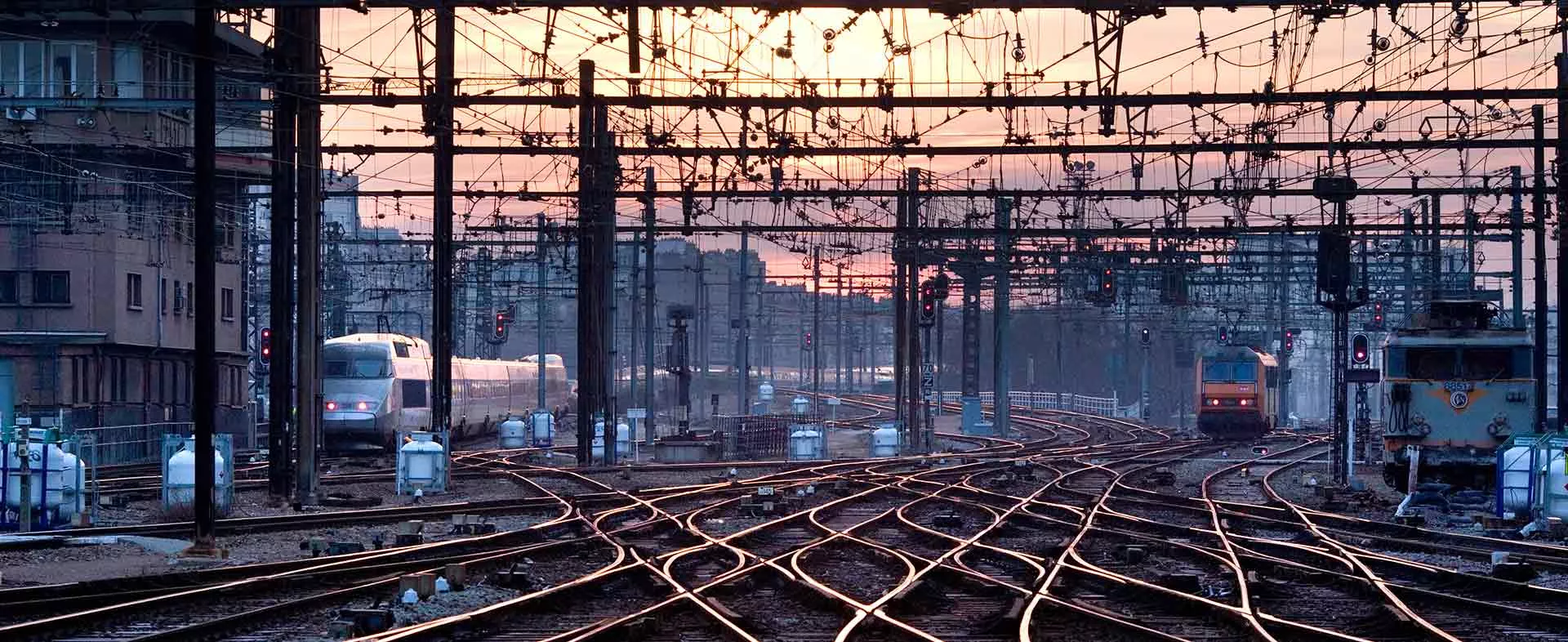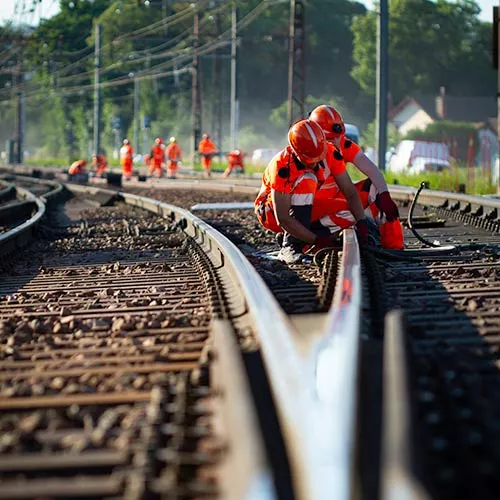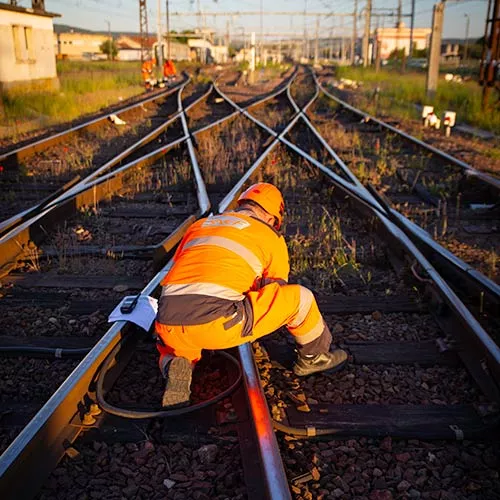
The ins and outs of switches and crossings
Le système d’aiguillage est indispensable pour orienter les trains sur les voies. En cas de panne, des équipes SNCF Switch and crossing systems are essential to guide trains from one track to another. If they malfunction, our specialized SNCF crews head out to repair them or replace components. Learn more about how we handle malfunctions.
Switches and crossings
What exactly are “switches and crossings”?
Switches and crossings—“S and Cs” for the pros—are used to direct trains, guiding them from one track to another.
They consist of a moving part, the “point”, and a fixed part, the “stock rail”. The section where the tracks cross is called the “crossing”.
They are usually remotely operated from a signal box. Every time an SNCF signaller changes a switch setting, they check their control panel to make sure it is locked in the correct position. Their objective: ensuring trains switch tracks safely and efficiently.
What happens if they malfunction?
We find out what caused the malfunction
A switch and crossing malfunction can be caused by an electrical or mechanical problem. Sometimes it can be a piece of ballast, a block of ice, or any other object jammed in the switch.

We repair the switch and crossing
Train traffic can be disrupted, or even suspended, while we repair or replace switches and crossings. No matter how minor the malfunction, a specialized team is always dispatched to the location.
How we handle traffic during repair and maintenance work
- Whenever possible, trains are rerouted until repair work is completed
- Sometimes, switches and crossings are manually operated by employees—this allows trains to pass through the zone during maintenance works.
- If repair work is likely to suspend traffic for an extended period, the problem is temporarily fixed —this allows trains to use the crossing, if necessary at lower speeds, minimizing traffic disruption. The final repairs are carried out at night, with SNCF crews working through the night to complete them.
Switch and crossing maintenance

Safety first
We inspect our switch and crossing assets regularly to ensure passenger safety, network reliability and smooth traffic flow. Our maintenance teams conduct rounds to inspect the network, assess damage and carry out preventive repairs. Mechanical and electric signallers and trackside inspectors are responsible for maintaining our switches and crossings and making sure they function smoothly.
Two types of experts are need for these jobs
- Mechanical signalling operators handle structural work and maintain the signalling components. They also go on track network inspection rounds and, if necessary, carry out repairs
- Electrical signalling operators inspect, maintain and upgrade electric signalling installations.
Share the article